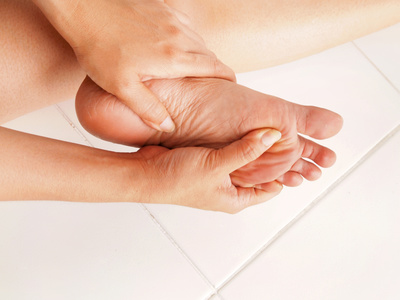By

 If you have diabetes, you probably know that taking care of your body is important to prevent complications. High blood sugar can cause nerve damage and restrict blood flow throughout your body which can influence the health of your kidneys, eyes, and feet so it is important to monitor the health of these areas. To protect your eyes have regular optical exams, and your primary doctor can do blood work and perform other tests to monitor the health of your kidneys. You may need to have a thorough foot exam once a year as well, but taking some simple steps at home can help maintain foot health so you can keep moving.
If you have diabetes, you probably know that taking care of your body is important to prevent complications. High blood sugar can cause nerve damage and restrict blood flow throughout your body which can influence the health of your kidneys, eyes, and feet so it is important to monitor the health of these areas. To protect your eyes have regular optical exams, and your primary doctor can do blood work and perform other tests to monitor the health of your kidneys. You may need to have a thorough foot exam once a year as well, but taking some simple steps at home can help maintain foot health so you can keep moving.
Why does foot care matter?
According to the Centers for Disease Control, men and women older than 45 with high blood sugar are ten times as likely to have a leg or foot amputated than adults with normal blood sugar levels. If an injury occurs, many people with diabetes are slow to heal and nerve problems can make it difficult to discern pain that usually signals a problem with your feet that requires medical care.
How can I protect my feet?
Protecting your feet is easy with a few basic steps:
Wash your feet every day in warm water.
Don”‘t trust your feet to tell you if the water is too hot. Use your elbow to feel the temperature and reduce the risk of burning yourself. Remember not to soak your feet. Just wash them off and dry them very well–especially between your toes.
If your skin is dry, use lotion to keep the skin from cracking.
Apply lotions once you have washed and dried your feet. Just remember not to apply any lotion between your toes.
Check your feet every day.
Use a mirror if you need to, or ask someone to help. Look for blisters, cuts, bruises, redness, calluses, sores or anything else that”‘s not normal for you.
Trim your toenails once a week after a shower or bath.
The nails will be the softest after a shower or bath, so trim them to a natural shape and file the corners gently with an emery board. If your nails are very thick, you may need to have them trimmed by a podiatrist or wound nurse. You can ask your regular doctor about this service.
Always wear slippers or shoes.
Even when you are inside, make sure to protect your feet. Wear comfortable slippers inside and well-fitting shoes outside to prevent stepping on anything that might injure your feet.
Feel the inside of your shoes.
Sharp edges or other objects that could slip inside your shoes can injure your feet without you ever feeling a thing. So before you put on your shoes, run your hand around inside them and feel for anything that may be out of place.
Take control of your diabetes to prevent complications
Taking control of your foot health is just one part of managing diabetes. Regular glucose testing, healthy eating choices, and insulin administration are all important parts of a management plan. People with foot concerns also often have vision issues as well. Fortunately tools are available to make diabetes care and management more convenient, such as continuous glucose monitoring and smart insulin pumps. There are several different pumps in the market, and one ought to be a good fit for you. For instance, if you do have compromised vision, the t:slim insulin pump has a bright color touch screen that will help you operate it.
Remember that proper management of your diabetes can reduce the likelihood of developing problems in your legs and feet and prevent complications in existing conditions.











